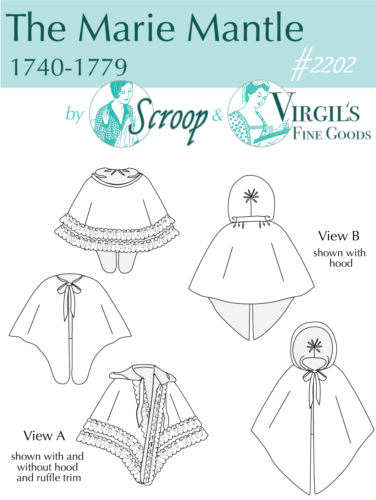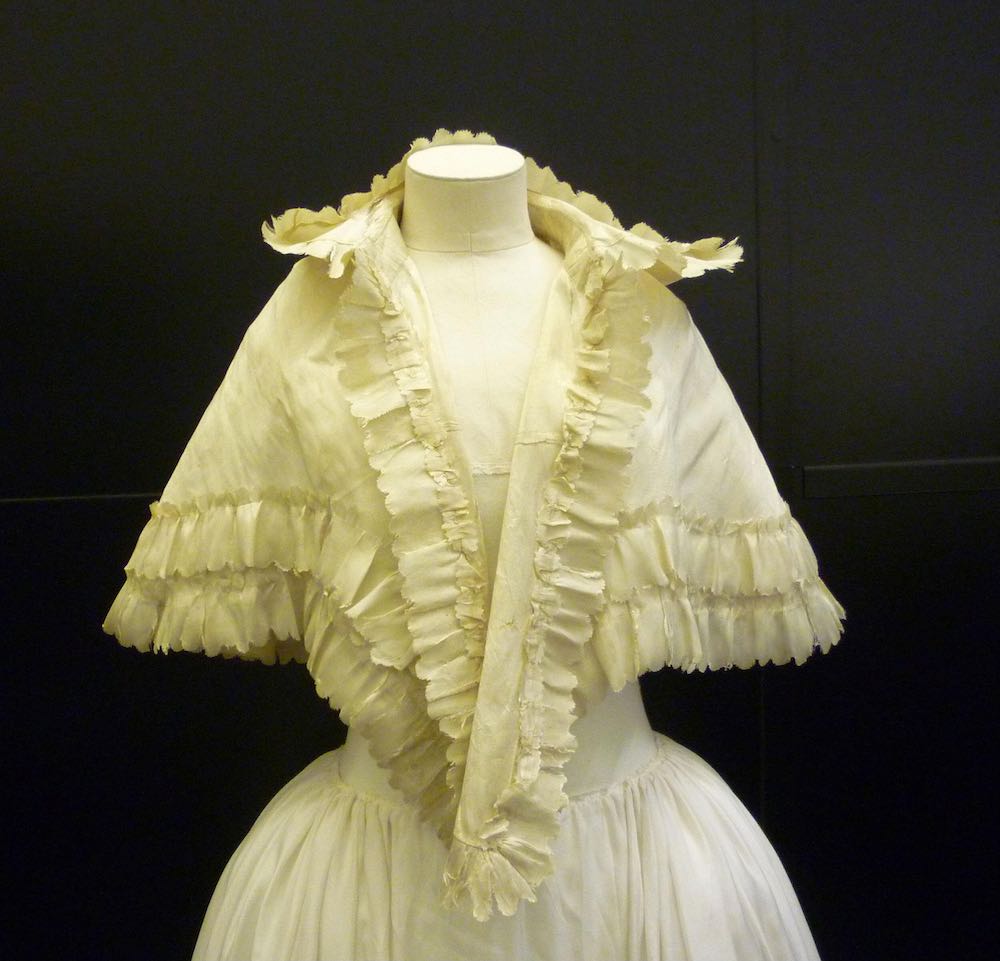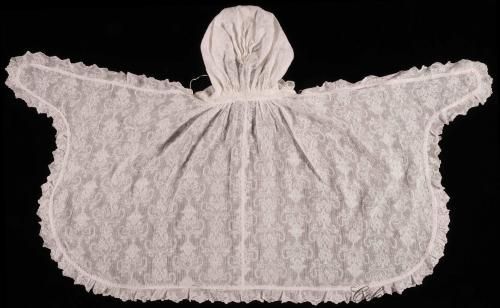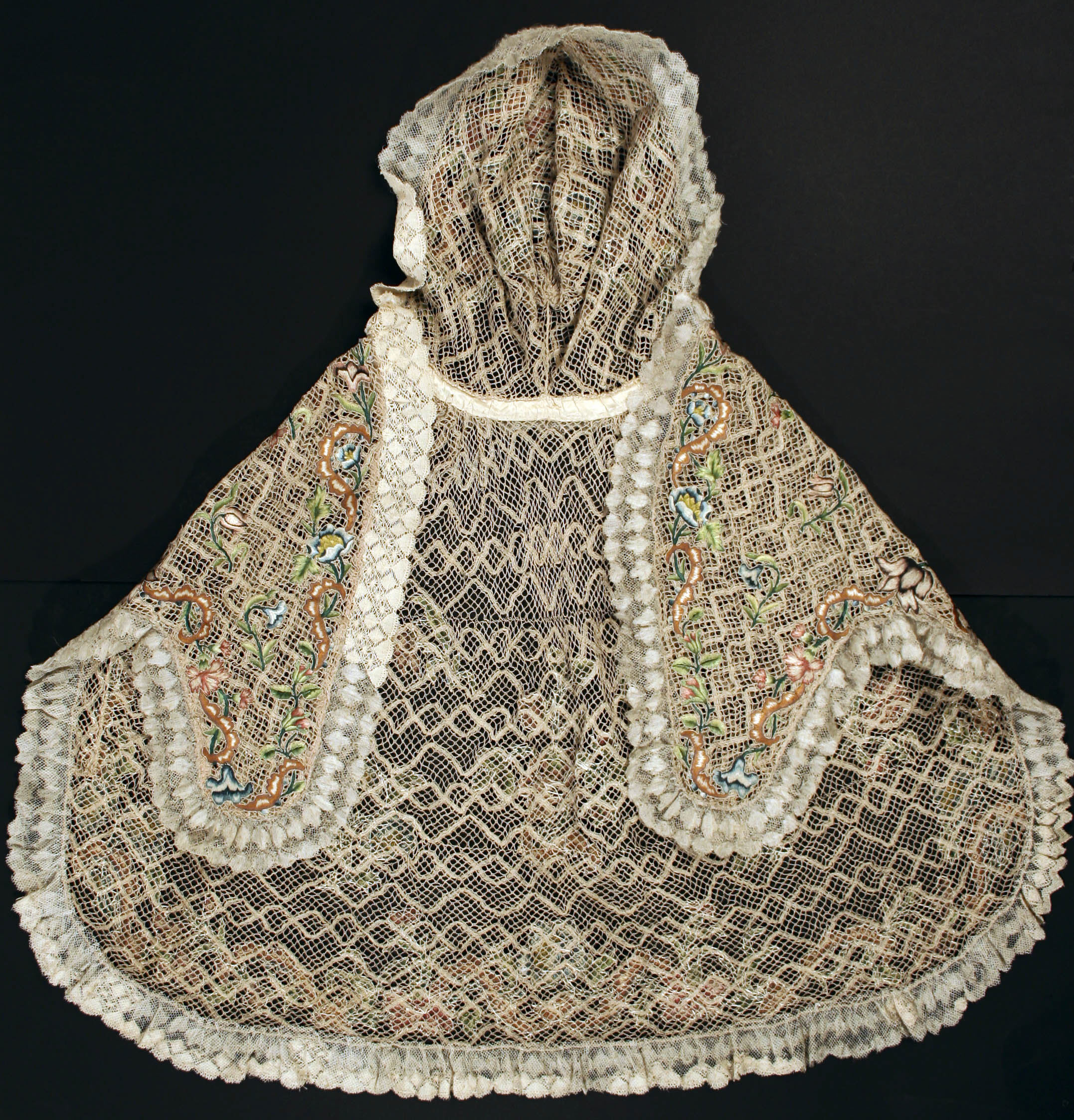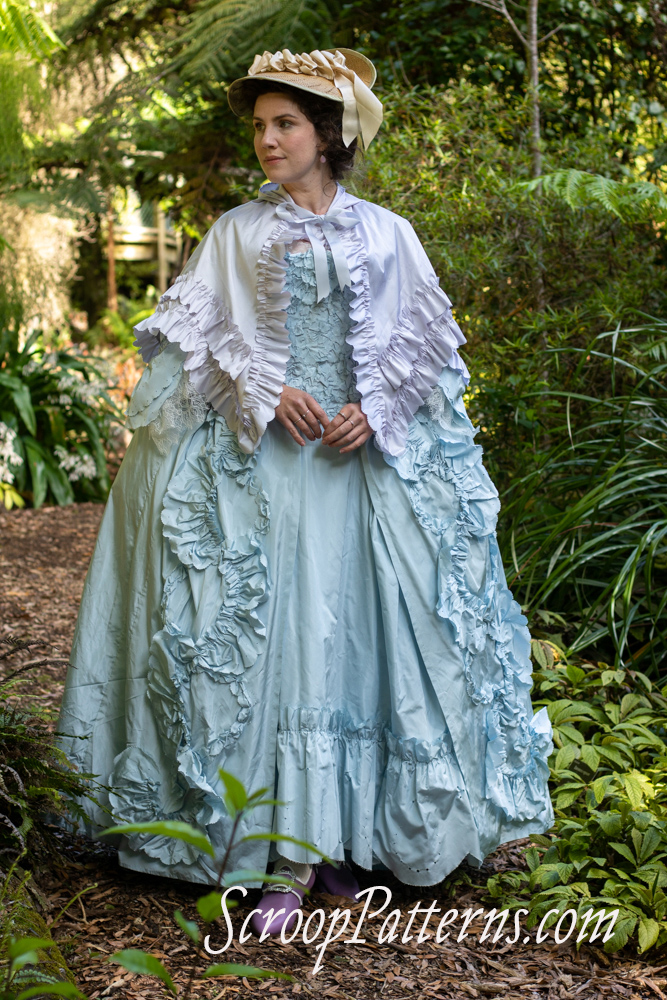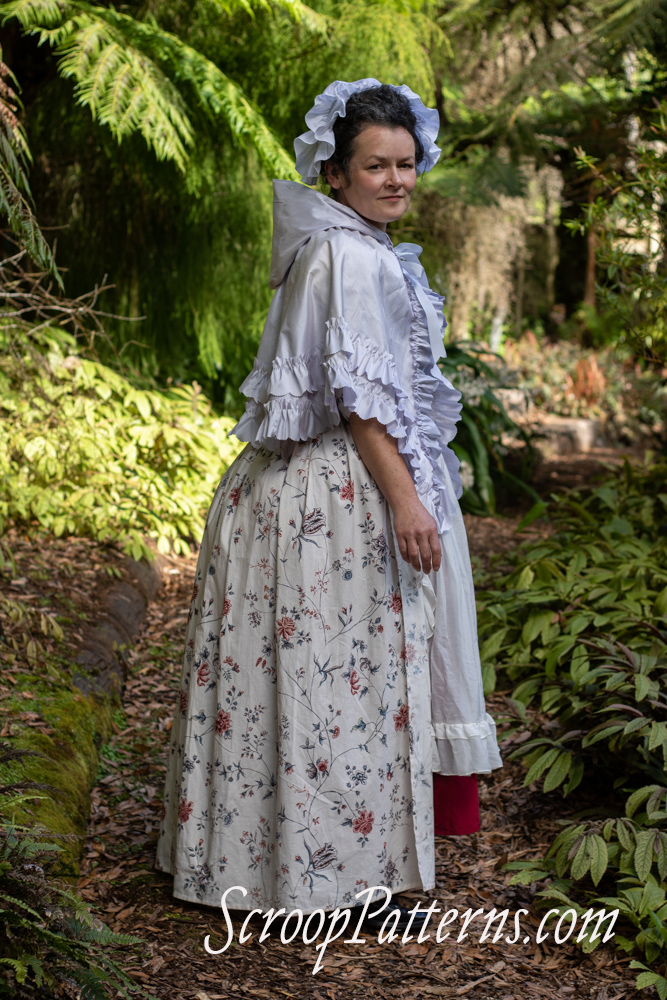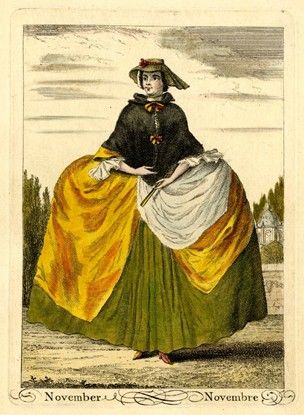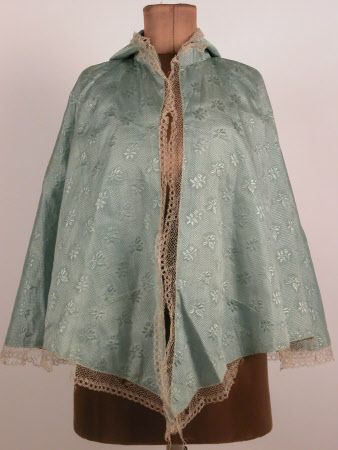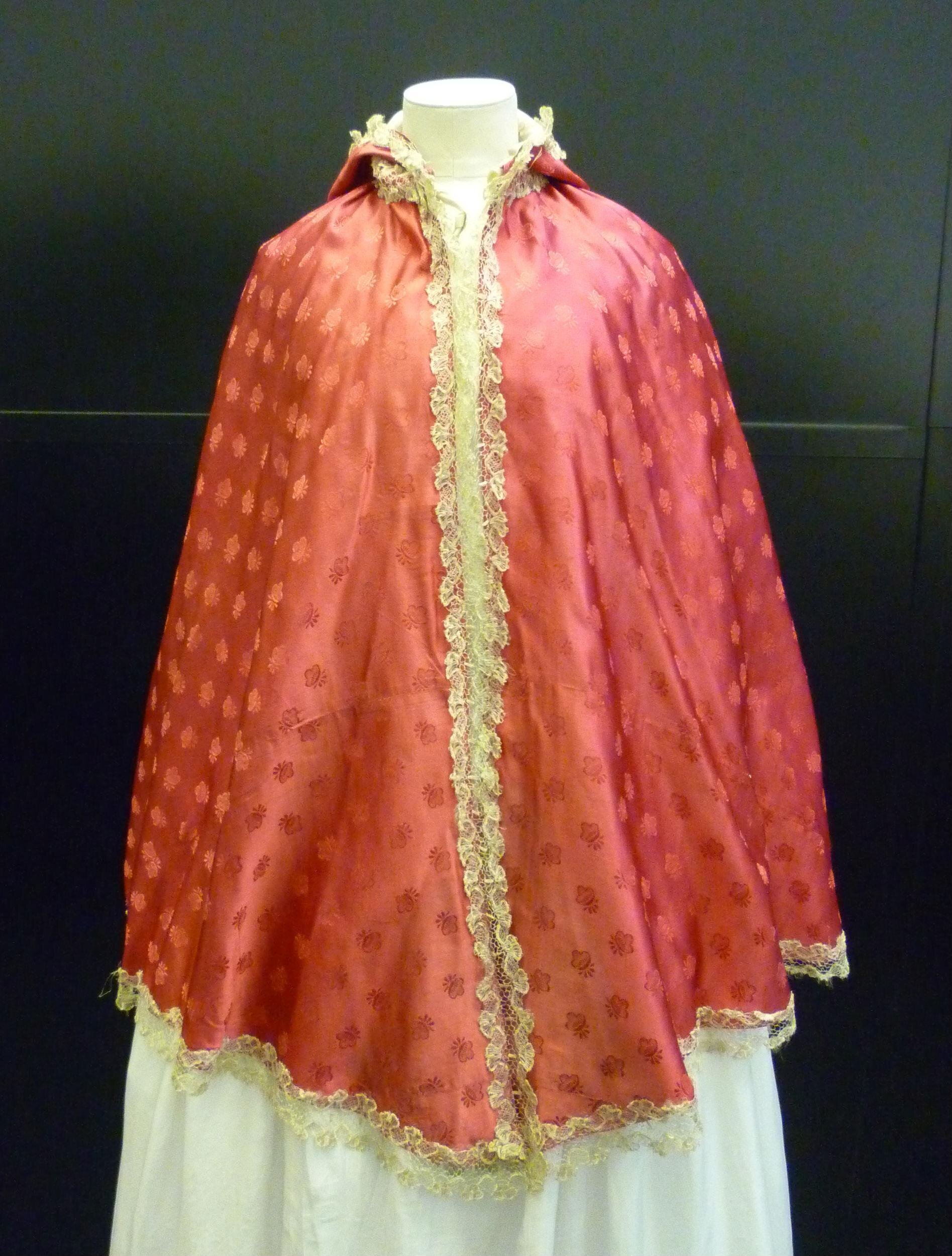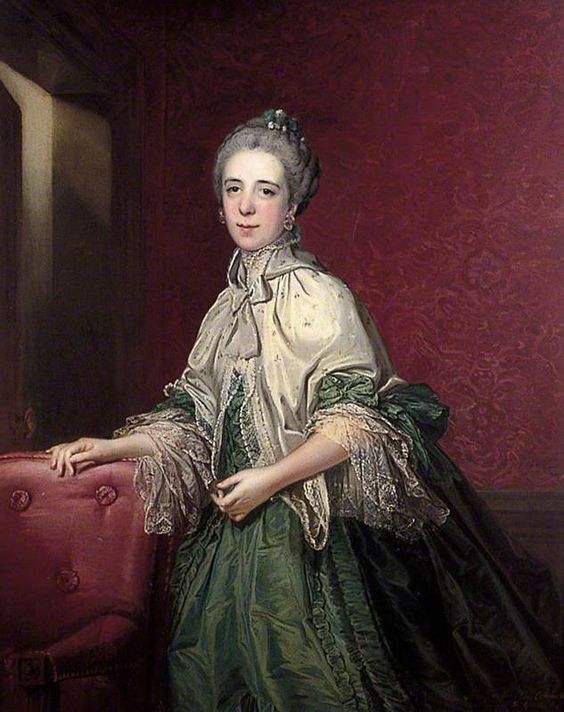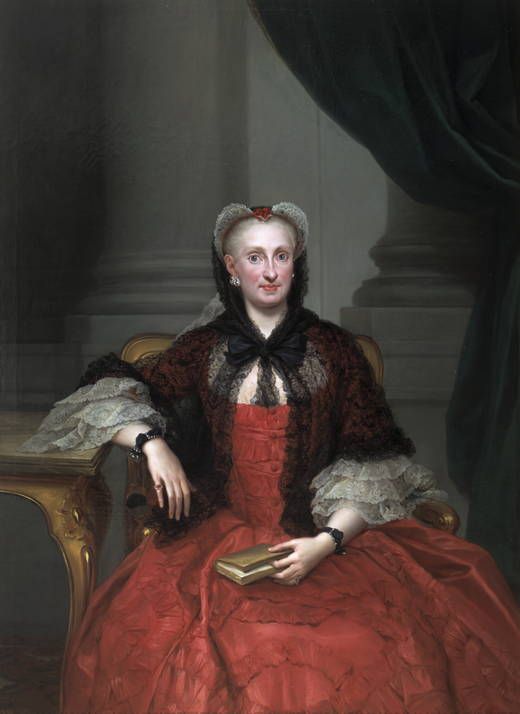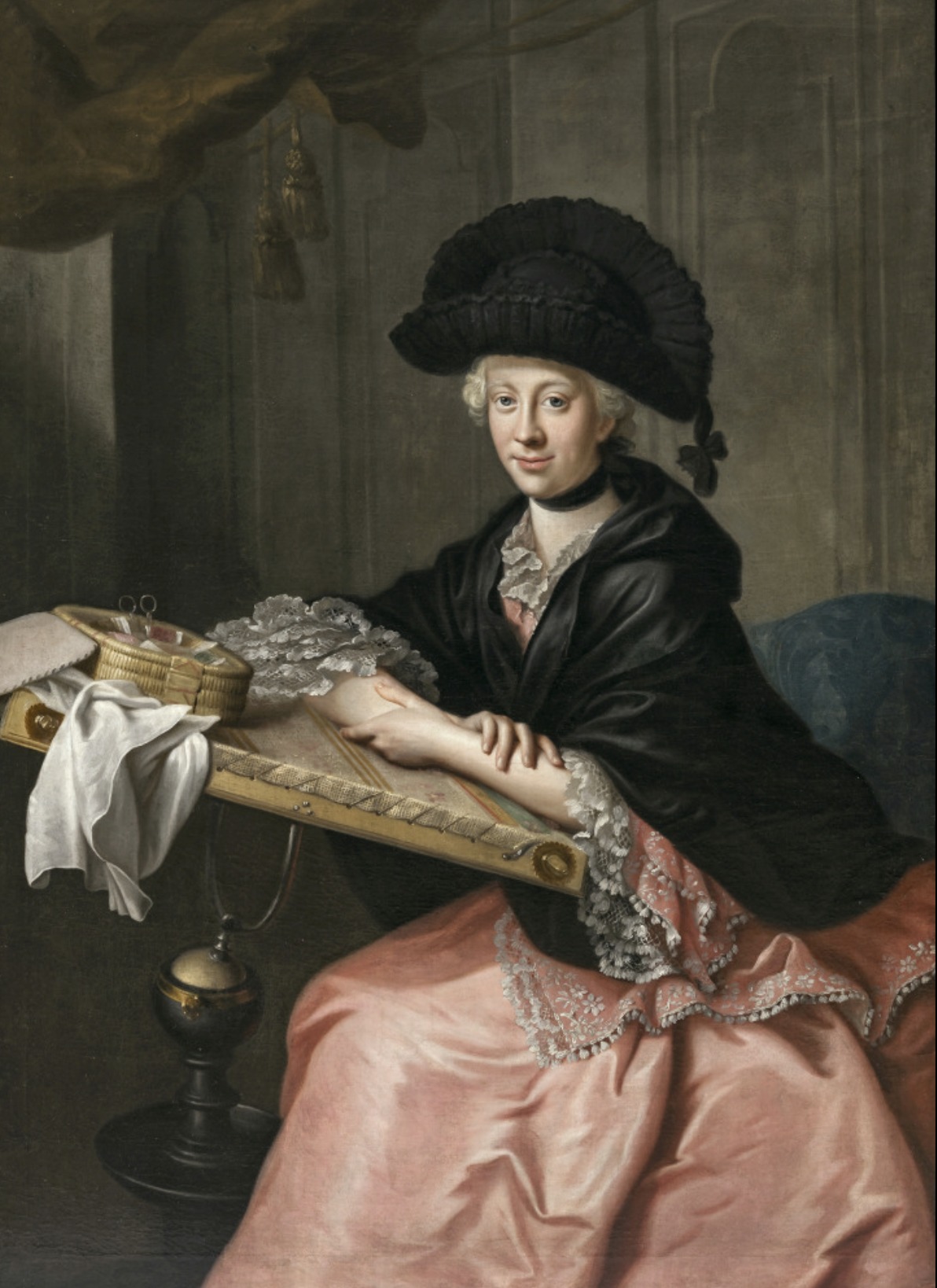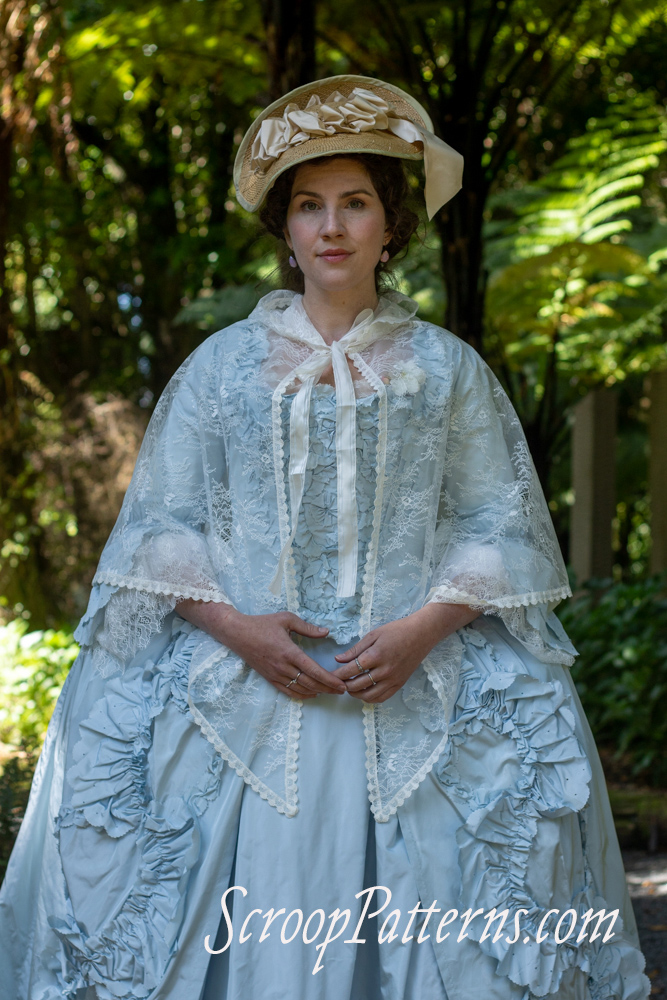Reminder: the Marie, Charlotte, and Sophia patterns, and the combined pack with all three, are on sale until Tue 13 December – don’t miss out!
The Scroop + Virgil’s Fine Goods mantle patterns actually started more than three years ago…
In addition to running Scroop Patterns, I teach Costume Construction at Toi Whakaari, the New Zealand Drama School. Toi Whakaari has an amazing graduation tradition. Rather than wearing standard gowns and hoods, the continuing students make the graduates personalised ‘cloaks’.
The cloaks can be anything. There have been classic capes, knitted shawls, hats, veils, wooden shields, jackets, kimono, and even a perfectly realised, exquisitely made, cardboard guitar. Anything that speaks to who the graduate is as a person, and reflects their journey at the school.
You can get a glimpse of this year’s cloaks (including the guitar!) here:
The ‘cloaks’ are made in secret, and given to the graduates by the makers as part of the graduation ceremony. It’s touching, and beautiful, sometimes hilarious, and yes, makes me cry.
Three years ago there was a costuming graduate who had a strong interest in historical costume. The students making her cloak came to me with a request. Would I help them pattern an 18th century mantle for her cloak?
A couple days of research and some quick patternmaking later, and I had the very first draft of what would become View A of the Marie.
Made up by the students in black gauze trimmed with black lace, it made an adorable ‘cloak’ that the graduate loved.
Last year there was another costume graduate with a love of historical costuming. It was also well known that she really wanted a cloak that she’d be able to use over and over: not one that was just an art piece for graduation. I did more research and patternmaking and she got a cloak made from an updated version of the mantle pattern: and she loves it.
I had so much fun researching and patternmaking the mantles, and everyone loved the graduate’s versions: obviously this needed to be a pattern.
I also knew that Amber had been working on and off on a mantle pattern for a few years. Could we combine ours?
We tried, but realised that with the amount of research I’d done, and the amount of research she’d done, and the number of techniques we had covered, and all the different views we had, it was WAY too much for one pattern.
So we split it into three patterns – and each of them is still extremely extensive and detailed!
Here are the primary inspirations we look at for the Marie Mantle.
Marie View A: The Inspiration
The primary inspiration for View A of the Marie was this utterly darling mantle from the V&A.
That shape! Those double ruffles! The interior ruffle! It’s all too perfect!
There are portraits showing similar ruffle-trimmed mantles, like this one of Maria Anna Sophia of Saxony:
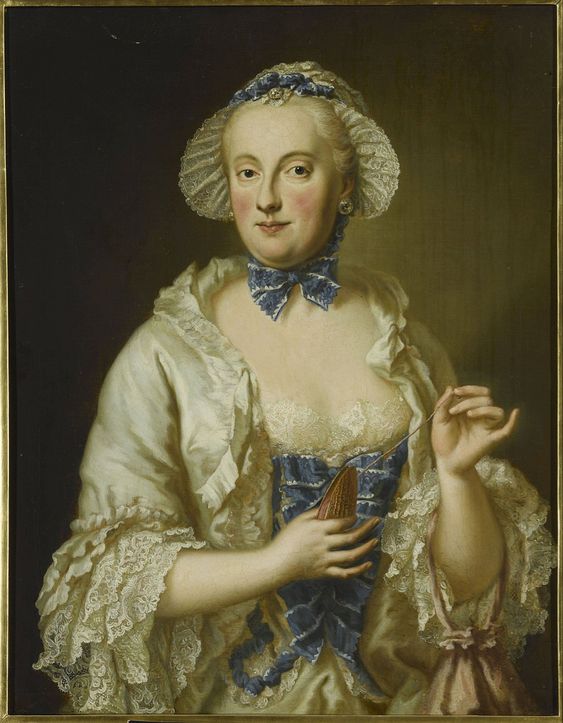
Georg Desmarées (1697–1776), Portrait of Maria Anna Sophia of Saxony (1728-1797), Museum im Wittelsbacher Schloss Friedberg
For further material and construction information, we also looked at the two figured gauze cloaks in Colonial Williamsburg’s collection. The black one is included in Costume Close Up, which was a helpful resource.

Cloak, 1760-1775, Spitalfields, England, Sheer silk gauze (leno weave, brocaded), Colonial Williamsburg, 1993-337
And this lace mantle at the Met:
Because this is such a classic 18th century shape, I photographed the sample both over a 1760s robe à la française:
And the 1775-1790 Angelica Gown, to really show how versatile it is:
Marie View B, the inspiration:
While we loved the curved front points of View A, there are also a number of extant mantles, and portraits of mantles, showing a much more triangular front shape, with straighter edges.
This shape shows up in the 1740s:
And there are examples of this shape all the way up to the early 19th century. Almost all of them are in figured silk with simple lace trim. Obviously lace trim is a technique we needed to include!
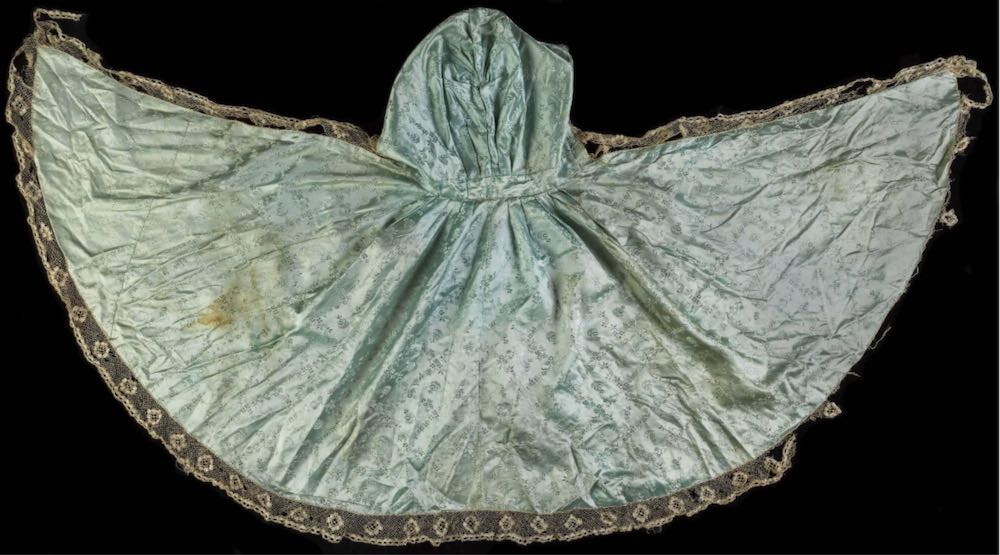
Cloak, 1770-90, America or England, possibly worn in New York, silk with linen lace, Colonial Williamsburg 2020-11
However, the similarity between mantles dated to the mid-18th century, and ones dated to the early 19th makes us cautious. There are certainly more depictions of this cloak shape in the mid-18th century than later. As a result, we’ve given our pattern an extremely conservative end-date of 1779.
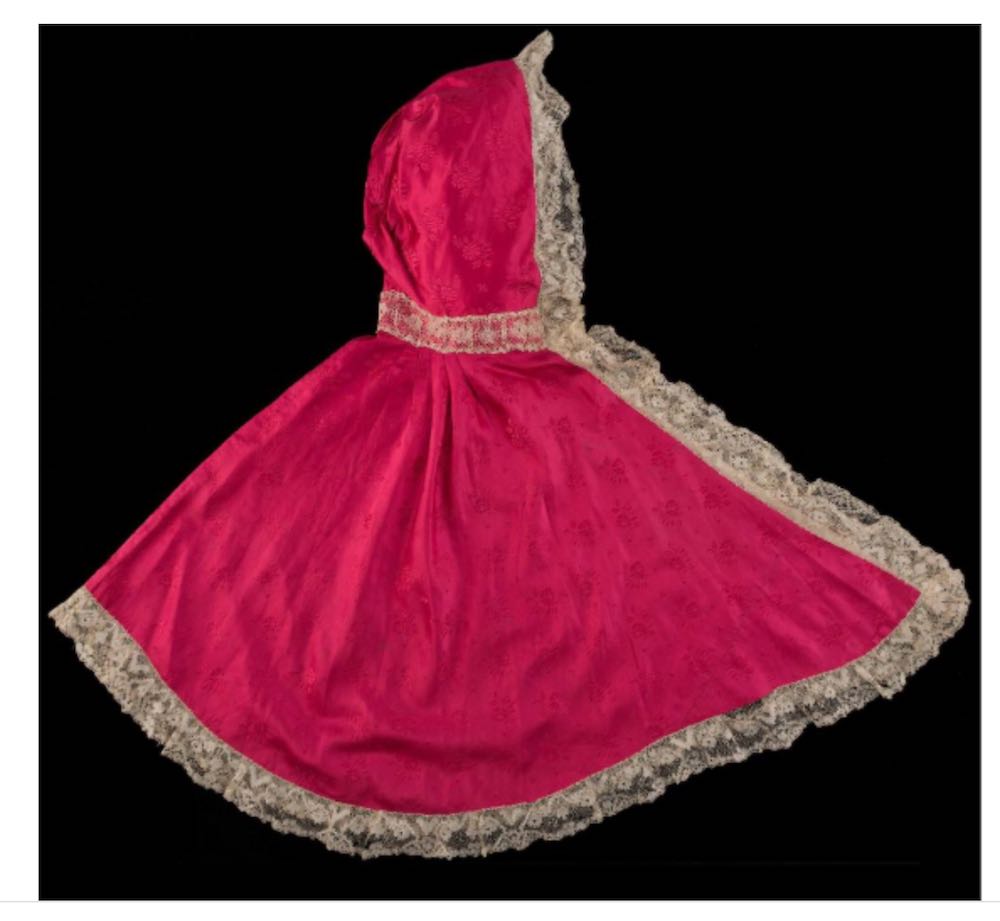
Cloak, ca. 1750, England (probably), Silk, Colonial Williamsburg, Gift of Titi Halle, 2014-177
There are depictions of mantles in this general style in a variety of materials, from satin to wool to velvet, to lace:
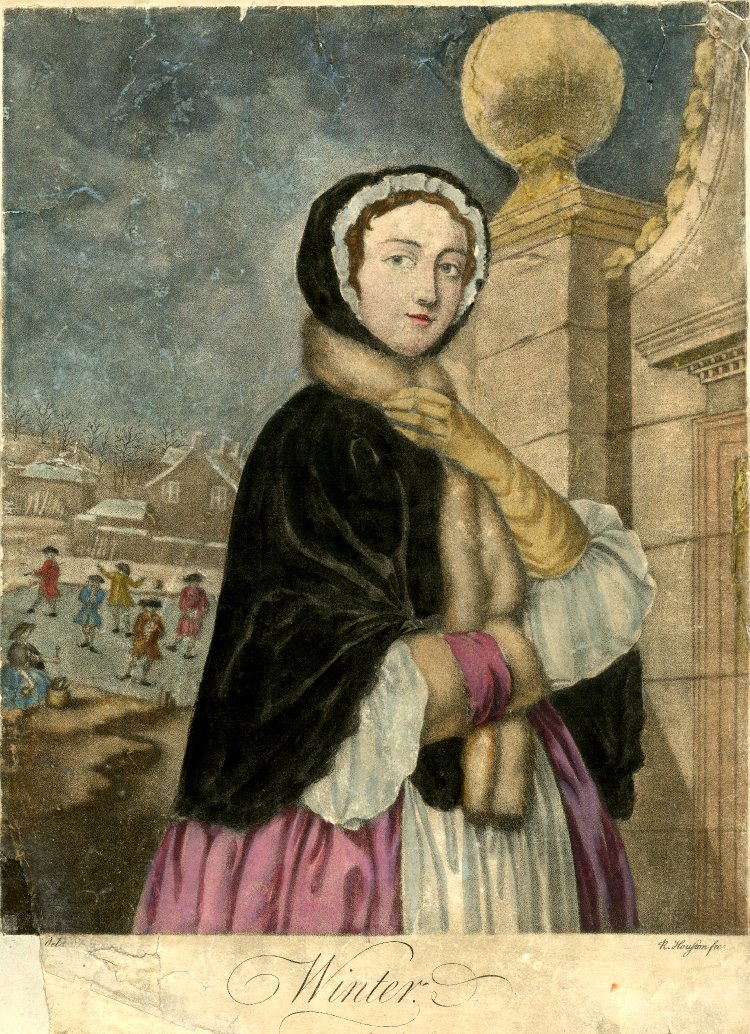
Winter, 1753-1766, British Museum, Accession Number 2010,7081.491
In lace and silk it’s a decadent accessory for a lady of leisure. In wool (shown here in the hoodless version), it’s a practical but chic wrap for a working woman:
Lace Mantle Inspiration:
In addition to all the gorgeous ruffled silk, figured gauze mantles, figured silk, and practical wool mantles, there are SO MANY portraits of lace mantles in both View A and View B’s shape:
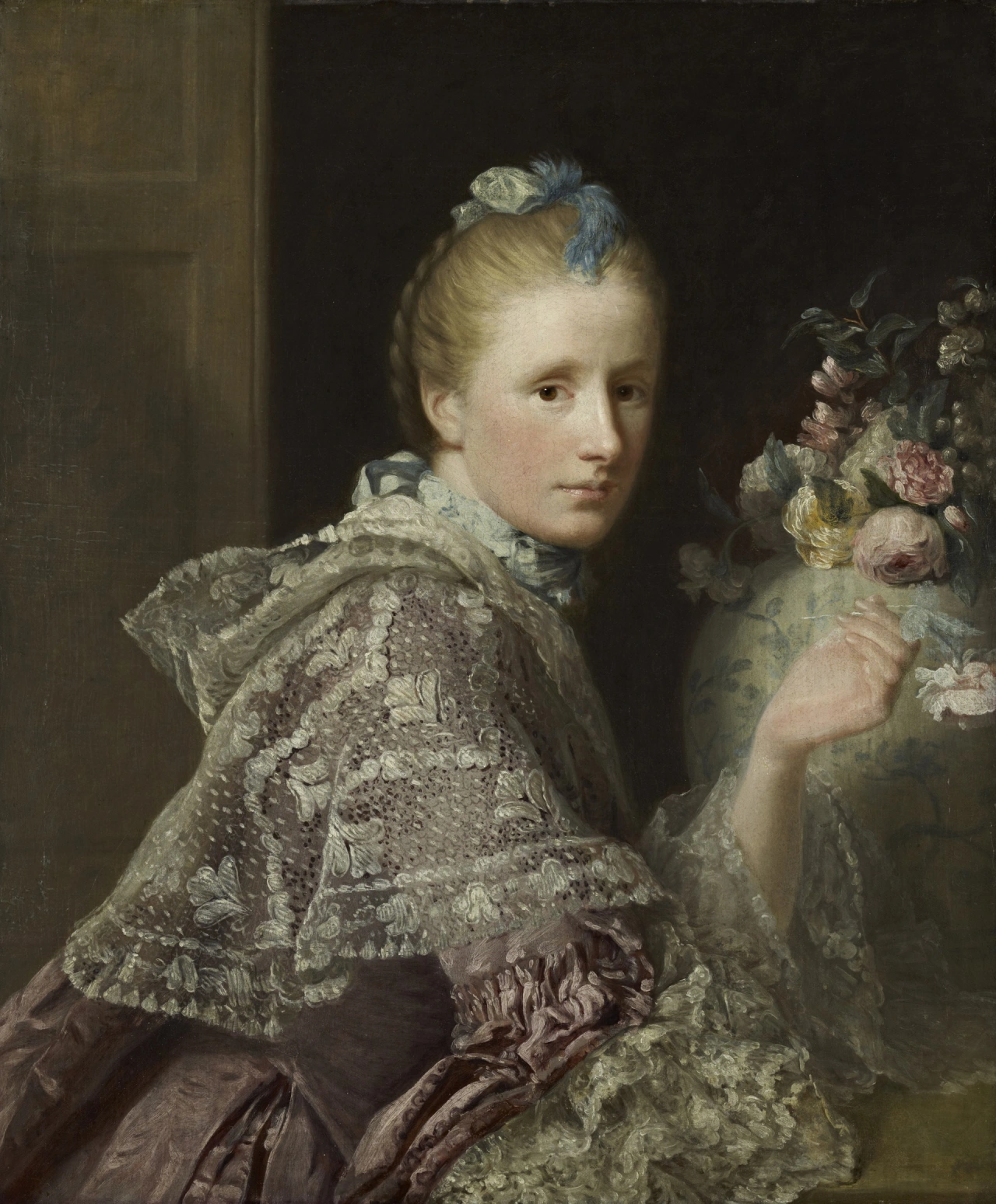
The artist’s wife: Margaret Lindsay of Evelick, c 1726 – 1782 by Allan Ramsay. National Galleries Scotland

Anna Rosina de Gask, Augusta Dorothea of Brunswick-Wolfenbüttel, Abbess of Gandersheim (1749–1810), daughter of Charles I, Duke of Brunswick-Wolfenbüttel
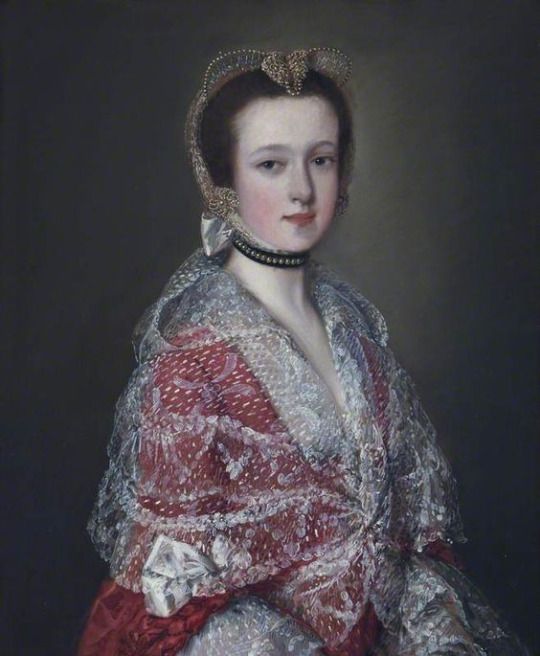
Thomas Gainsborough, portrait of Louisa Barbarina Mansel, Lady Vernon, 1763-7 (c) National Trust, Sudbury Hall; Supplied by The Public Catalogue Foundation
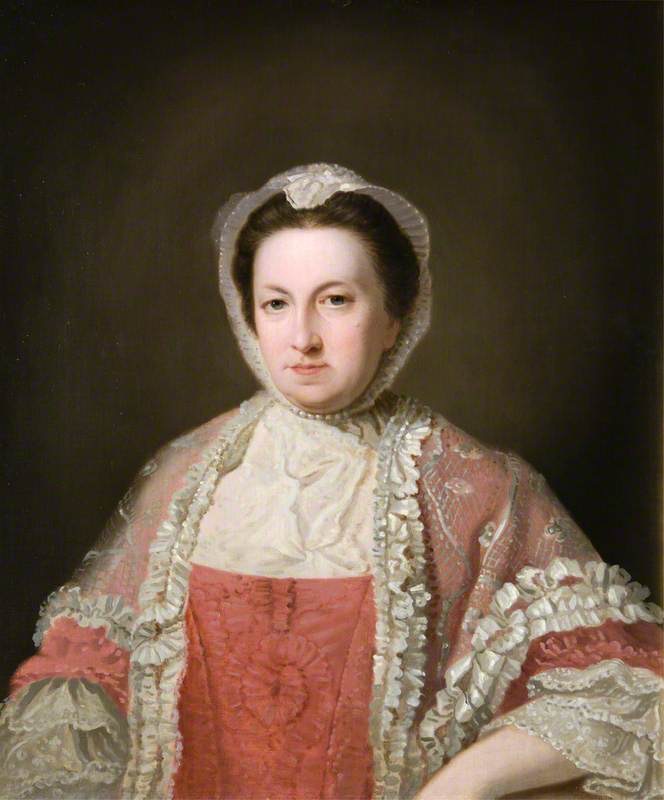
Lady Frances Erskine (1716–1776, by David Allan, ca. 1764, (c) Aberdeen Art Gallery & Museums; Supplied by The Public Catalogue Foundation
I adore lace. I’ve even gotten to work with 18th century lace and lace mantles in museum collections. Lace mantles are so gorgeous, and such an iconic 18th century accessory that’s so often overlooked, because it’s difficult to replicate.
While it’s impossible to replicate actual handmade lace mantles without actually making lace by hand, there are ways to fake it. So I was determined to include instructions on making lace mantles in the Marie pattern.
I made a very simple lace mantle as a sample, to really show off the pattern shape, but I’ll be doing a photo essay on making a much more elaborate one:
So the Marie has two shapes (both of which are easily adaptable for even more mantle shape fabulosity). It’s unlined, and can be made in wool, silk, gauze, or lace, and trimmed with hemmed or pinked ruffles, or lace. And all of that takes 26 pages of detailed instructions…
No wonder we had to break the pattern up!
More about the mantles:
- Read about the inspiration behind the Marie Mantle here.
- Read about the inspiration behind the Charlotte Mantle here.
- See the Charlotte Mantle tester makes here.
- Read about the inspiration behind the Sophia Mantle here.
More inspiration:
I have an entire pinterest board of inspiration for the mantle patterns, sorted into sections for Marie, Charlotte and Sophia, with an extra section just for lace mantles.
Keep in mind that some of the images are not extremely clear, and may actually depict fichu or cloaks. They are on the board for fabric, colour, or lace type inspiration. Be sure to do your own research if you need to be extremely historically accurate.
Further reading:
- Baumgarten, Linda & Watson, John with Florine Carr. Costume Close Up: Clothing Construction and Pattern, 1750-1790. The Colonial Williamsburg Foundation, Williamsburg, Virginia: 1999
- Bradfield, Nancy. Costume in Detail, 1730-1930. Harrap Limited, London: 1981
- Hunnisett, Jean. Period Costume for Stage & Screen. Patterns for Outer Garments, Book I: Cloaks, Capes, Stoles, and Wadded Mantles. Studio City, CA Players Press, Inc. 2000
- Waugh, Norah. The Cut of Women’s Clothes: 1600-1930. Faber & Faber Limited, London: 1968
Tomorrow: the Marie tester makes!


